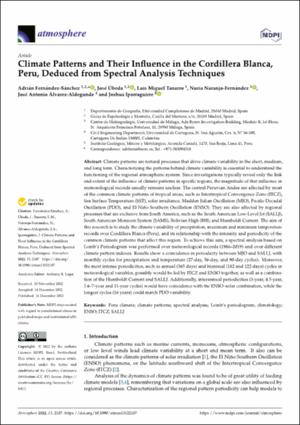Por favor, use este identificador para citar o enlazar este ítem:
https://hdl.handle.net/20.500.12544/4294Ficheros en este ítem:
| Fichero | Descripción | Tamaño | Formato | |
|---|---|---|---|---|
| Fernandez-Climate_patterns...cordillera_Blanca-Peru.pdf | Artículo científico | 4.33 MB | Adobe PDF | Visualizar/Abrir |
Este ítem está sujeto a una licencia Creative Commons Licencia Creative Commons












